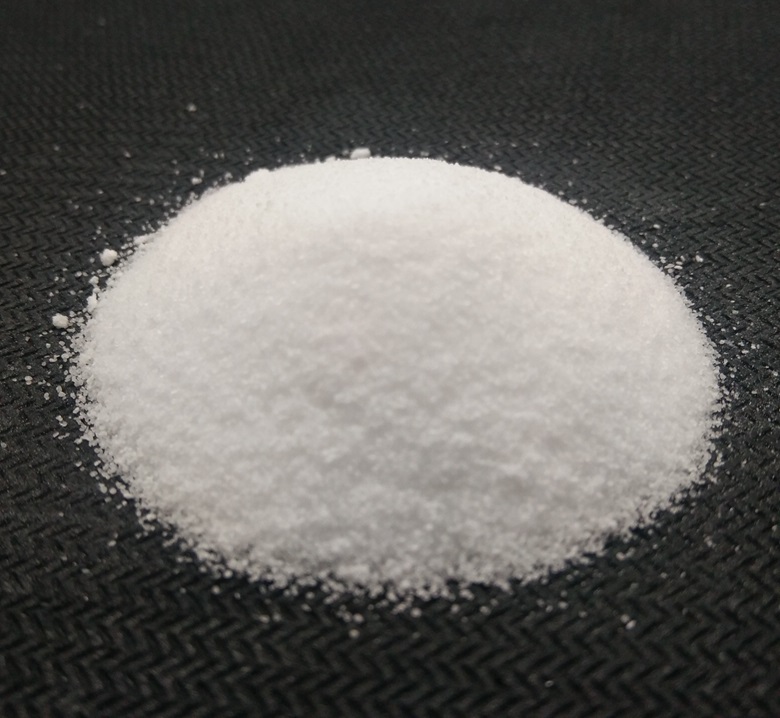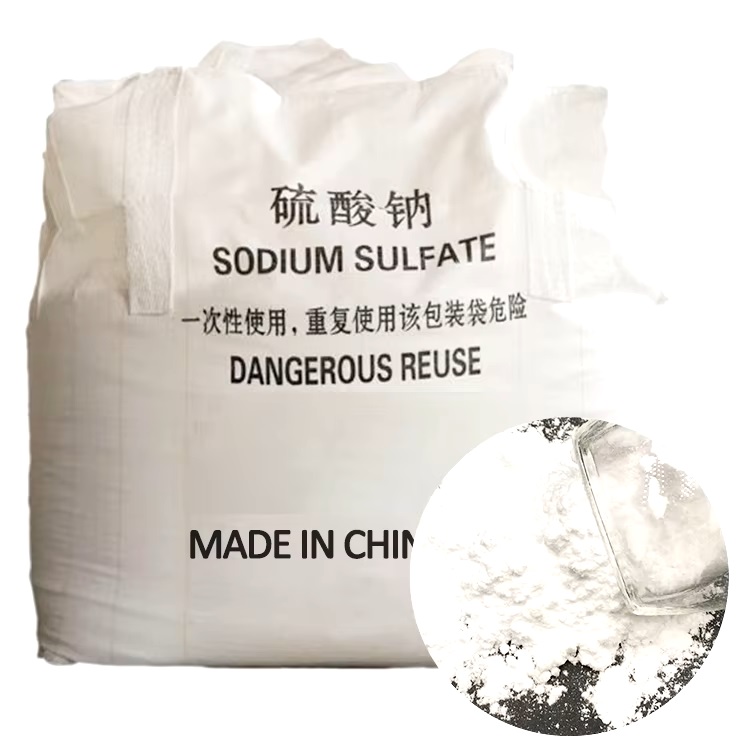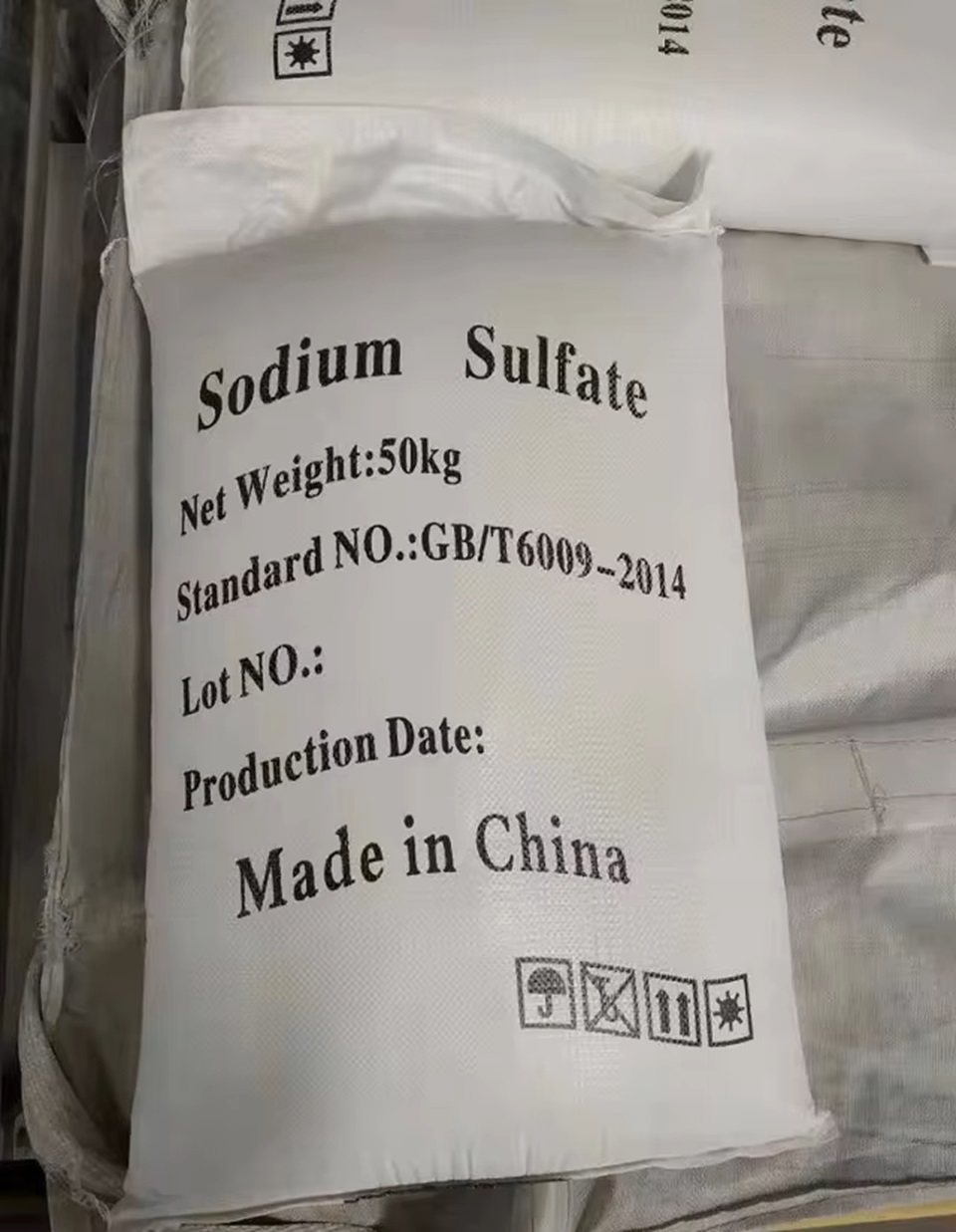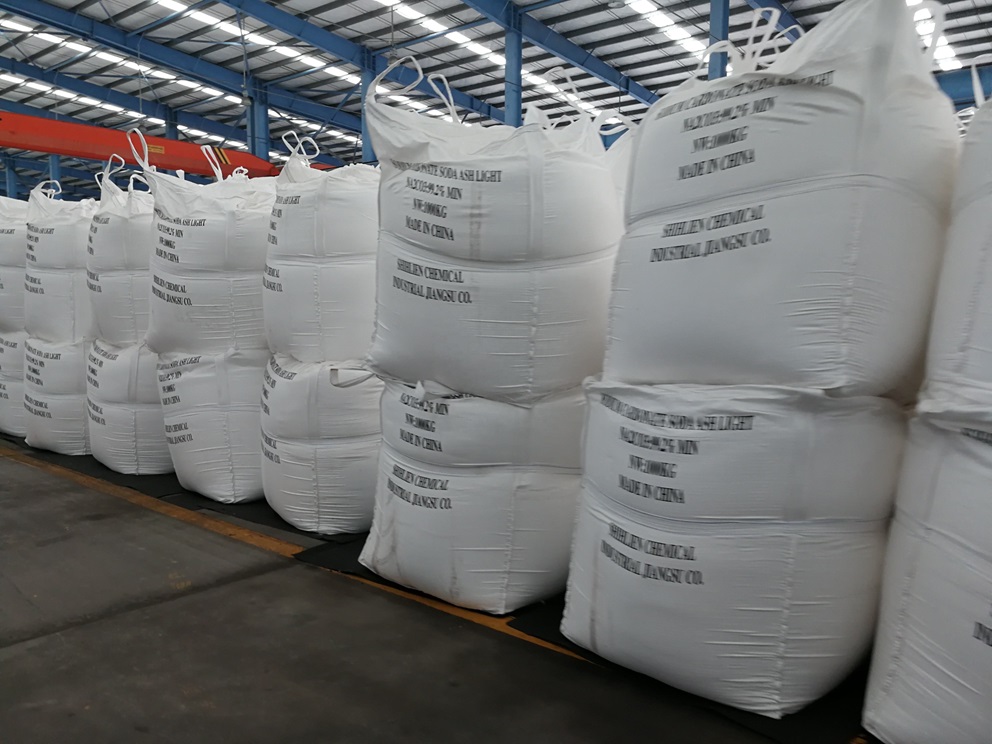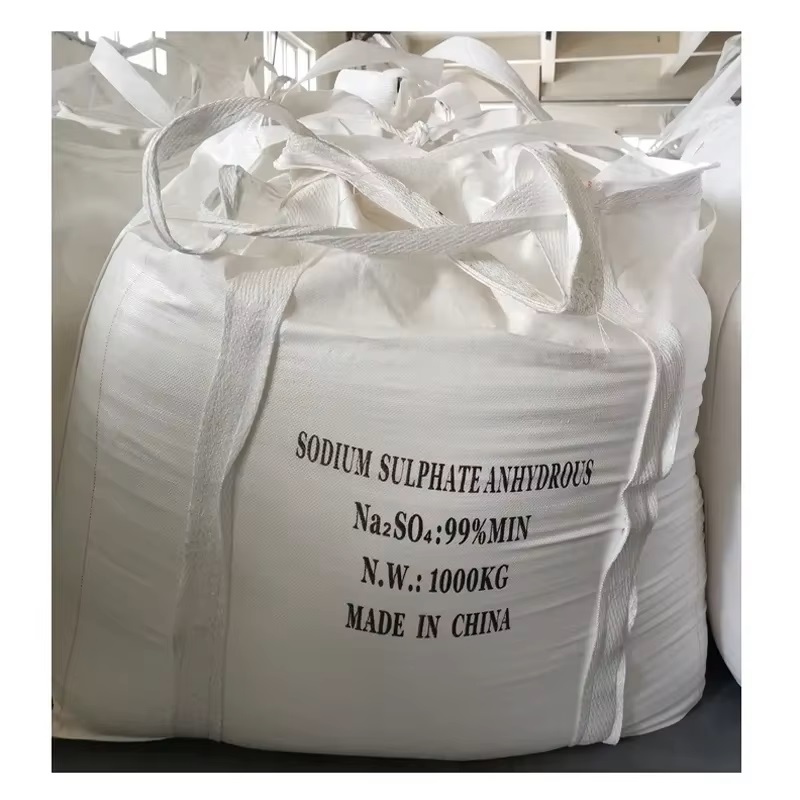We unleash your business potential by maximize the business innovation.
Send EmailSodium Sulfate, Sodium Sulphate, Bisodium sulfate, Disodium Sulfate, 7757-82-6, 15124-09-1
CAS: 7757-82-6;15124-09-1
Molecular Formula: Na2SO4
Names and Identifiers
Physico-chemical Properties
| Molecular Formula | Na2SO4 |
| Molar Mass | 142.04214 |
| Density | 2.68 g/mL at 25 °C (lit.) |
| Melting Point | 884 °C (lit.) |
| Boling Point | 1700°C |
| Water Solubility | 18.5 mg/L |
| Solubility | H2O: 1M at20°C, clear, colorless |
| Vapor Presure | 3.35E-05mmHg at 25°C |
| Appearance | White crystal |
| Specific Gravity | 2.68 |
| Color | White |
| Maximum wavelength(λmax) | ['λ: 260 nm Amax: 0.015', , 'λ: 280 nm Amax: 0.015'] |
| Merck | 14,8680 |
| PH | 5.2-8.0 (50g/l, H2O, 20℃) |
| Storage Condition | Store at +5°C to +30°C. |
| Stability | Stable. Incompatible with strong acids, aluminium, magnesium, strong bases. Hygroscopic. |
| Sensitive | Hygroscopic |
| Refractive Index | 1.484 |
| MDL | MFCD00003504 |
| Physical and Chemical Properties | Character white monoclinic crystal or powder. melting point 884 ℃ relative density 2.68 solubility in water, the aqueous solution is alkaline. Soluble in glycerol, insoluble in ethanol. solubility: H2O: 1 M at 20 ℃, clear, colorless WGK Germany:1 RTECS:WE1650000 |
| Use | It is used as salting-out agent and coagulant in medicine, and also used in papermaking, glass, printing and dyeing, synthetic fiber, leather making and other industries |
Risk and Safety
| Hazard Symbols | Xi - Irritant |
| Risk Codes | 36/37/38 - Irritating to eyes, respiratory system and skin. |
| Safety Description | 24/25 - Avoid contact with skin and eyes. |
| WGK Germany | 1 |
| RTECS | WE1650000 |
| FLUKA BRAND F CODES | 3 |
| TSCA | Yes |
| HS Code | 28331100 |
| Toxicity | LD50 orally in Rabbit: > 2000 mg/kg |
Upstream Downstream Industry
Reference
Nature
- White orthogonal double-cone crystal or crystalline powder. Bitter and salty, odorless. Melting Point: about 800 °c; D2.7. Moisture absorption, easy to absorb the three points of water in the humid air. Soluble in water and glycerol, insoluble in ethanol. The aqueous solution was neutral. 33 ° C maximum solubility (1:2), the temperature and then high solubility decreased, 100 ° C dissolved in 2.4 water. When the aqueous solution is lower than 32. 38 ℃, it is crystallized with decahydrate, and when it is higher than 32. 38 ℃, it starts to be crystallized with anhydrous sodium sulfate.
- anhydrous Glauber's salt is a non-aqueous sodium sulfate mineral. Orthorhombic crystal system, the crystal is double cone, column or plate, aggregate is granular, powder or block. Colorless, gray-white, yellow or yellow-brown. Transparent to translucent. Glass gloss or resin gloss. Stripy white. Hardness 2.5~3, density 2.66~2.7g/cm3. Very soluble in water. He has cold feeling. The taste was cool and salty. It is easily hydrated in humid air and turns into powdered aqueous sodium sulfate to cover the surface. Anhydrous mirabilite is produced in the Salt Lake of brine containing sodium sulfate, and is symbiotic with mirabilite, calcium mirabilite, purgative Salt White sodium magnesium alum, gypsum, salt magnesium mirabilite, rock salt, and vesicular alkali; it can also be produced by the dehydration of mirabilite; There is a small amount of output around the volcanic vent.
Preparation Method
- vacuum evaporation method: After natural mirabilite is dissolved and clarified, the clarified liquid is subjected to vacuum evaporation dehydration, thickening, centrifugal separation and drying to obtain anhydrous sodium sulfate.
- calcium Mirabilite Method: The calcium mirabilite ore is crushed, ball-milled with water, and leached. The leaching solution is filtered to remove impurities, and the filtrate is clarified, anhydrous sodium sulfate was obtained by drying.
- The conversion method is to prepare anhydrous sodium sulfate by using high and low temperature salt produced by potassium chloride as a raw material. Under certain temperature and mixing conditions, after three-stage conversion, magnesium sulfate and sodium chloride are firstly converted into white sodium magnesium alum, then converted into anhydrous sodium magnesium alum, and finally converted into anhydrous sodium sulfate. The entire conversion process is a continuous counter-current operation. The slurry is driven and lifted mechanically, and the liquid flows backward according to the difference, and the segments are linked and influenced each other. The first stage of conversion is controlled to react at a pH value of 3-4 and a temperature of 55-70 ℃, the white sodium magnesium alum slurry is thickened by a one-stage settler and then sent to a two-stage conversion tank; The pH value of the two-stage conversion is 4-5, and the temperature is about 100 ℃; in the third stage, the conversion conditions are controlled to pH 5~6, and the temperature is about 55 ℃. Under stirring, anhydrous sodium magnesium alum reacts with sodium chloride aqueous solution to generate anhydrous sodium sulfate, which is centrifuged and dried, anhydrous sodium sulfate was obtained. This method has high cost, low recovery rate, consumption of sulfuric acid, impurities are not easy to remove, the color of the product is poor, but the equipment is simple.
- rayon by-product method: After crystallization, dissolution, neutralization, filtration, concentration, cooling, separation and drying of the wastewater from the coagulation of rayon, anhydrous sodium sulfate is obtained.
Introduction
No smell, bitter and salty taste, odorless and non-toxic. Easy to absorb three-molecule water in humid air. Soluble in water and glycerin, insoluble in alcohol. 3.6 dissolved in water. The solubility is the highest at 33 ℃ (1:2), the solubility decreases at higher temperature, and it is dissolved in 2.4 parts of water at 100 ℃.
Use
It is mainly used as a filler for synthetic detergents. Cooking agents used in the paper industry in the manufacture of kraft pulp. The glass industry is used to replace soda ash. The chemical industry is used as a raw material for the manufacture of sodium sulfide, sodium silicate and other chemical products. The textile industry is used for the preparation of vinylon spinning coagulation bath. The pharmaceutical industry is used as a laxative. Also used in non-ferrous metallurgy, leather and other aspects.
Safety
packed in plastic woven bags lined with polyethylene plastic bags, each with a net weight of 50kg or log/kg. Should be stored in a ventilated, dry warehouse. In the summer or high temperature area is easy to dissolve and form a large block, storage and transportation should be moisture-proof, rain-proof. Be careful not to leak the product by puncturing the packaging bag with iron nails or hard objects with sharp tips and corners. Do not mix with food, coal, cement, etc. to prevent pollution. In case of fire, it can be suppressed by water and various fire-retardants.
Reference Information
, the secretion and movement of the gastrointestinal slightly increased, it has the role of stomach.
A large number of oral, that is, a large number of sodium sulfate dissolved in a large number of water, because its ions are not easily absorbed, can keep a large number of water in the intestine, can mechanically stimulate the intestinal mucosa, can soften the fecal mass, it is beneficial to accelerate defecation, and is mainly used for constipation of large intestine, elimination of intestinal poison, elimination of worm, etc.
| pH range of acid-base indicator discoloration | 5.2 - 9.2 |
| chemical raw materials | sodium sulfate is an important chemical raw material, which is the main raw material for the production of sodium sulfide, sodium silicate and other chemical products, it can also be used as a filler for synthetic detergents, a cooking agent used in the paper industry in the manufacture of kraft pulp. sodium sulfate is also called sodium sulfate, anhydrous mirabilite and anhydrous sodium sulfate. White monoclinic fine crystal or powder. The relative density is 2.68 and the melting point is 884 ℃. Soluble in water, aqueous solution is neutral. Soluble in glycerol, insoluble in ethanol, exposed to air, easy to absorb water into water-containing sodium sulfate. It is a homogeneous polycrystalline material, which is diamond-shaped at a temperature of 32.4 to 223 ° C., and monoclinic crystals are formed at higher temperatures, and 241 ° C. Is transformed into hexagonal crystals. When crystallized from solution, it has affinity for iron, iron compounds and various organic substances; High purity, fine particles of anhydrous sodium sulfate is called sodium sulfate. There are two kinds of crystalline hydrate of sodium sulfate: one is sodium sulfate heptahydrate Na2SO4 · 7H2O, White positive six or tetragonal crystals, and water loss at 24.4 ℃. Another is the ten water sodium sulfate Na2SO4-10H2O, the common name of mirabilite, powder, sodium hydrosulfite and so on. Colorless monoclinic crystal, density 1.464g/cm3, melting point of 32.38 ℃,100 ℃ when the loss of crystal water into anhydrous sodium sulfate, soluble in water, in dry air weathering into anhydrous white powder. Sodium sulfate can be used as chemical analysis reagents, such as dye test, printing and dyeing industry used as mordant, used to manufacture sodium sulfide, glass, water glass, enamel, quantitative determination of nitrogen, paper pulp, medical use as diuretics, laxative and antidote for barium salt poisoning. Crystals of sodium sulfate are precipitated in the salt ponds in winter. naturally occurring sodium sulfate ore is widely distributed, mostly magnesium sulfate (calcium) double salt and mirabilite. There are many salt lakes in Inner Mongolia, Qinghai, Tibet and some areas of Xinjiang in China, and a large amount of sodium sulfate exists in the salt lakes. The industrial preparation of sodium sulfate is mainly obtained from the separation of natural minerals, or from the dehydration of mirabilite and the treatment of sodium chloride with sulfuric acid. Sodium sulfate is also a by-product of many chemical industrial production sectors and is extracted from waste liquid discharged from the production of viscose fiber and cellophane. Sodium sulfate is also a by-product in the production of sodium dichromate, phenol, boric acid, lithium carbonate, and certain pigments. Sodium sulfate decahydrate is dissolved in its own crystalline water by heating to its melting point (32.38 ° C.) while forming an anhydrous salt. This temperature is ten water Salt, anhydrous salt and saturated solution three-phase equilibrium temperature, as long as the three phase coexistence, the temperature is fixed, so this system can be used for constant temperature bath or correction of temperature. Another feature of sodium sulfate is its ease of becoming a supersaturated solution. |
| Main purpose | sodium sulfate is an important raw material for glass and paper making. In the paper and cellulose industry in the largest amount, the amount of about 70% of the total. Sodium sulfate is a component of a synthetic detergent, which is a neutral salt, and its addition reduces the surface tension and increases the solubility of the detergent. It is also a dye diluent and dyeing and printing aids, as direct dyes, sulfur dyes, vat dyes and other cotton fiber dyeing agent, as a direct dye dyeing silk retarding agent. In the chemical industry, sodium sulfate is used as a raw material for the manufacture of sodium sulfide, gypsum, sodium silicate and other chemical products. Methods for producing sulfuric acid, sulfur, soda ash, ammonium sulfate and other products from sodium sulfate have been developed, but these methods have not been widely used due to their high cost. Sodium sulfate cold agent is commonly used in laboratory. Mirabilite is used as a laxative in medicine. Most of the sodium sulfate entering the body is retained in the gastrointestinal tract, not absorbed, maintaining a certain penetration, can increase the intestinal volume caused by intestinal peristalsis, with laxative effect. Sodium sulfate is an antidote for barium and lead poisoning. When lead poisoning, 10% mirabilite is used for gastric lavage or oral administration of 1~2% sodium sulfate solution. |
| pharmacological effects | |
| solubility in water (g/100ml) | grams dissolved per 100ml of water at different temperatures (℃): 4.9g/0 ℃;9.1g/10 ℃;19.5g/20 ℃;40.8g/30 ℃;48.8g/40 ℃; 45.3g/60 ℃;43.7g/80 ℃;42.7g/90 ℃;42.5g/100 ℃ |
| identification test | 5% sample solution sodium test (IT-28) and sulfate test (IT-29) positive. |
| content analysis | accurately weigh the sample which is pre-dried at 105 ℃ for 4H, and dissolve in of water, hydrochloric acid 1 ml was added and heated to boiling. Under constant stirring, approximately 10ml of hot barium chloride assay solution (TS-37) was added in small portions and heated on a steam bath for 1H. The precipitate was filtered off and washed with water until free of chloride, dried, burned and weighed. The mass of barium sulfate obtained was multiplied by 0.6086, corresponding to the sodium sulfate (Na2SO3) content. |
| toxicity | ADI is not restrictive (FAO/WHO,2001). GRAS(FDA,§ 186.1797,2000). LD50 5989mg/kg (mouse, oral). |
| Use | used as analytical reagent and mordant used as analytical reagent and mordant used as analytical reagent and dehydrating agent agent for producing caramel pigment. Food Pigment diluent. GB 2760-96 for food processing aids. Paper approved for use in contact with food in the United States of America (FDA,§ 186.1771,2000). see "mirabilite". It is mainly used as a filler for synthetic detergents. Cooking agents used in the paper industry in the manufacture of kraft pulp. The glass industry is used to replace soda ash. The chemical industry is used as a raw material for the manufacture of sodium sulfide, sodium silicate and other chemical products. The textile industry is used for the preparation of vinylon spinning coagulation bath. The pharmaceutical industry is used as a laxative. Also used in non-ferrous metallurgy, leather and other aspects. It is used as salting-out agent and coagulant in medicine, and also used in papermaking, glass, printing and dyeing, synthetic fiber, leather and other industries Kjeldahl nitrogen determination. Dry organic liquid. Serum protein was examined. Determination of copper content in iron and steel |
| production method | The vacuum evaporation method is used to dissolve the natural mirabilite and clarify the solution, anhydrous sodium sulfate was prepared by centrifugal separation and drying. Its Na2SO4? 10H2O → Na2SO4 10H2O calcium mirabilite grinding of calcium mirabilite ore, ball milling with water, leaching, leaching of mirabilite solution after filtration to remove impurities, filtrate clarification, and then by evaporation dehydration, centrifugal separation, anhydrous sodium sulfate was obtained by drying. Its Na2SO4? CaSO4 2H2O → Na2SO4 CaSO4? 2H2O transformation law to potassium chloride production of by-products of high and low temperature salt as raw materials for the preparation of anhydrous sodium sulfate. Under certain temperature and mixing conditions, after three-stage conversion, magnesium sulfate and sodium chloride are firstly converted into white sodium magnesium alum, then converted into anhydrous sodium magnesium alum, and finally converted into anhydrous sodium sulfate. The entire conversion process is a continuous counter-current operation. The slurry is driven and lifted mechanically, and the liquid flows backward according to the difference, and the segments are linked and influenced each other. The first stage of conversion is controlled to react at a pH value of 3-4 and a temperature of 55-70 ℃, the white sodium magnesium alum slurry is introduced into the one-stage settler for thickening, and then sent to the two-stage conversion tank; The two-stage conversion pH 4~5, the temperature is about 100 ℃; The third stage conversion condition is controlled to pH 5~6, under stirring, anhydrous sodium magnesium alum reacts with sodium chloride aqueous solution to produce anhydrous sodium sulfate, which is centrifuged and dried to obtain anhydrous sodium sulfate. Its 2NaCl 2MgSO4 4H2O → Na2SO4? MgSO4? 4H2O MgC12Na2SO4? MgSO4? 4H20 → Na2SO4? MgSO4 4 H2ONa2SO4? MgSO4 2NaCl → 2Na2SO4 MgCl2 this method has high cost, low recovery rate, consumption of sulfuric acid, impurities are not easy to remove, the resulting product color is poor, but the equipment is simple. Rayon by-product method after crystallization, dissolution, neutralization, filtration, concentration, cooling, separation and drying, sodium sulfate anhydrous was prepared. See "mirabilite" for H2SO4 2NaOH → Na2SO4 2H2O ". The by-product of hydrochloric acid produced by the Co-heating of sulfuric acid and salt is obtained by recrystallization from water (it is a colorless monoclinic crystal). |
